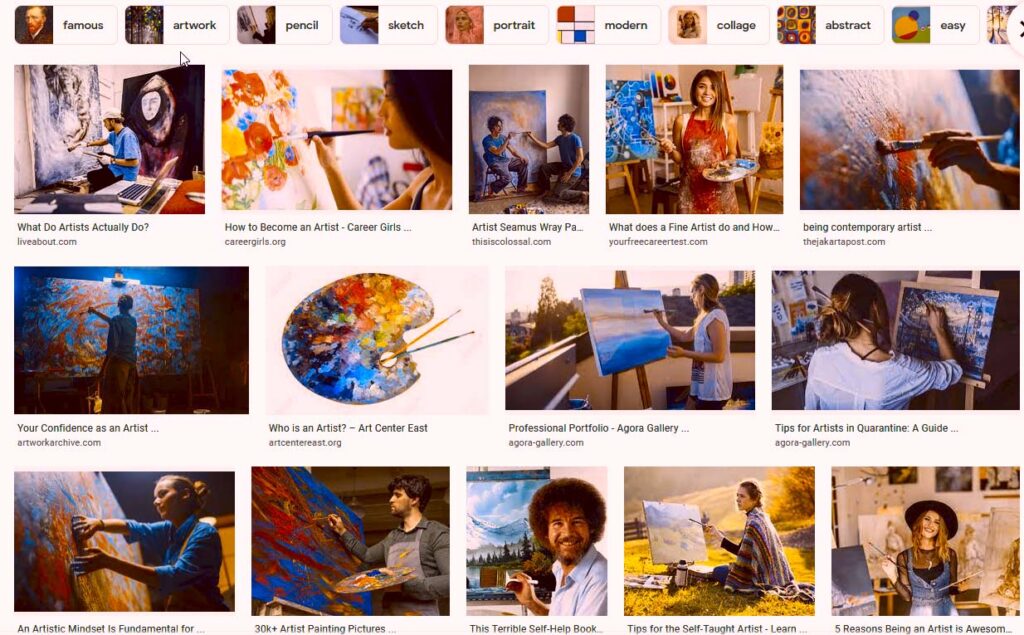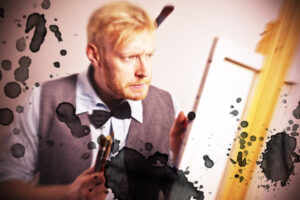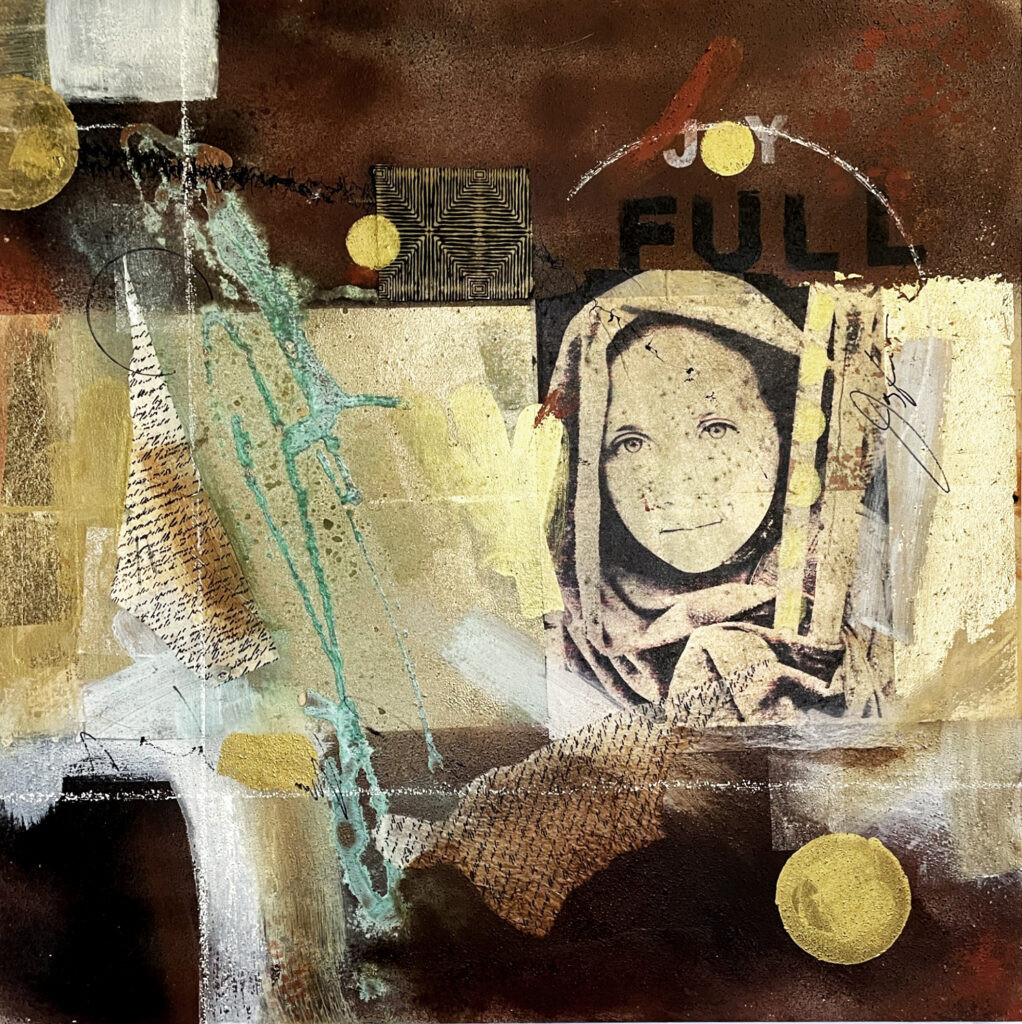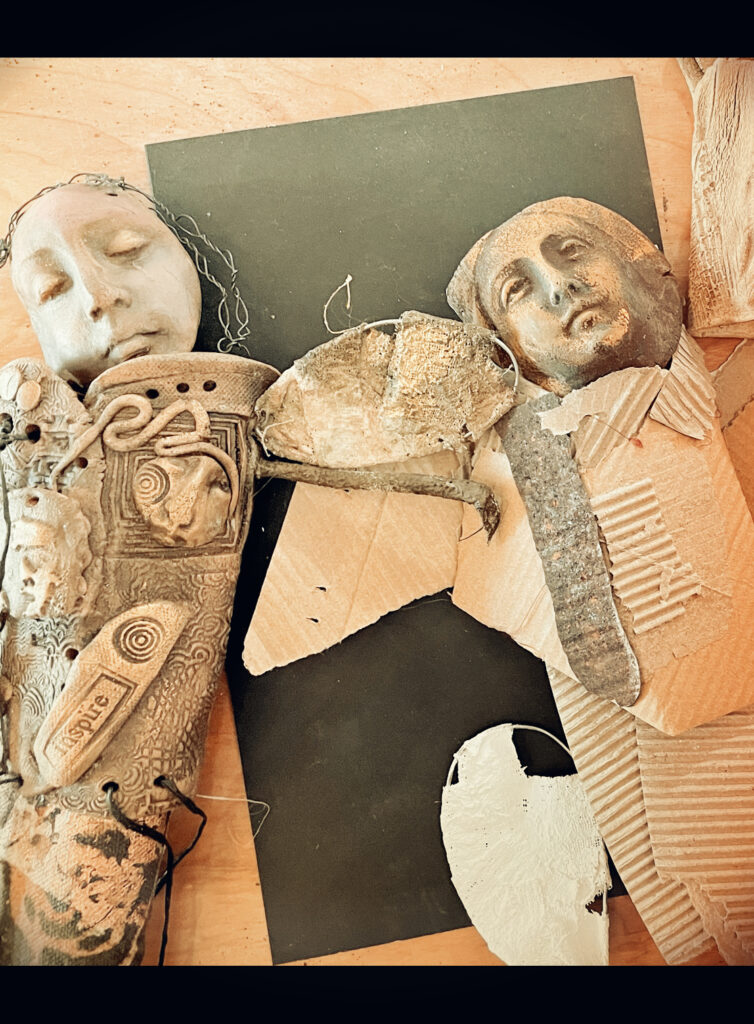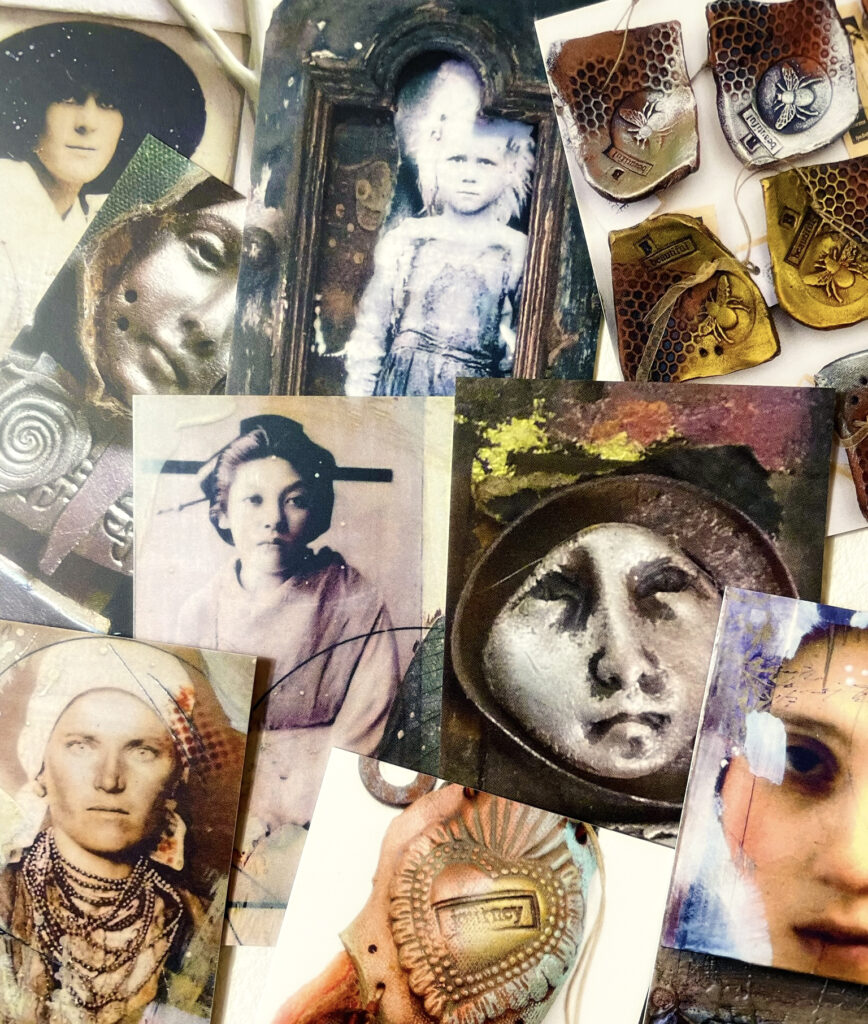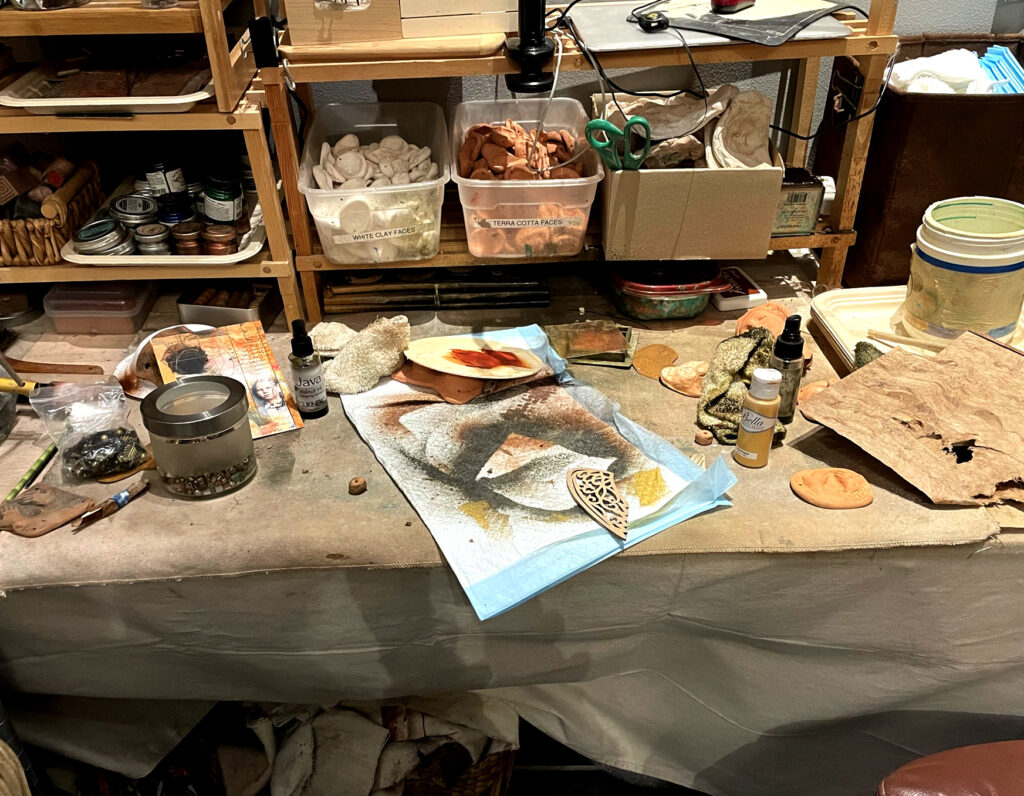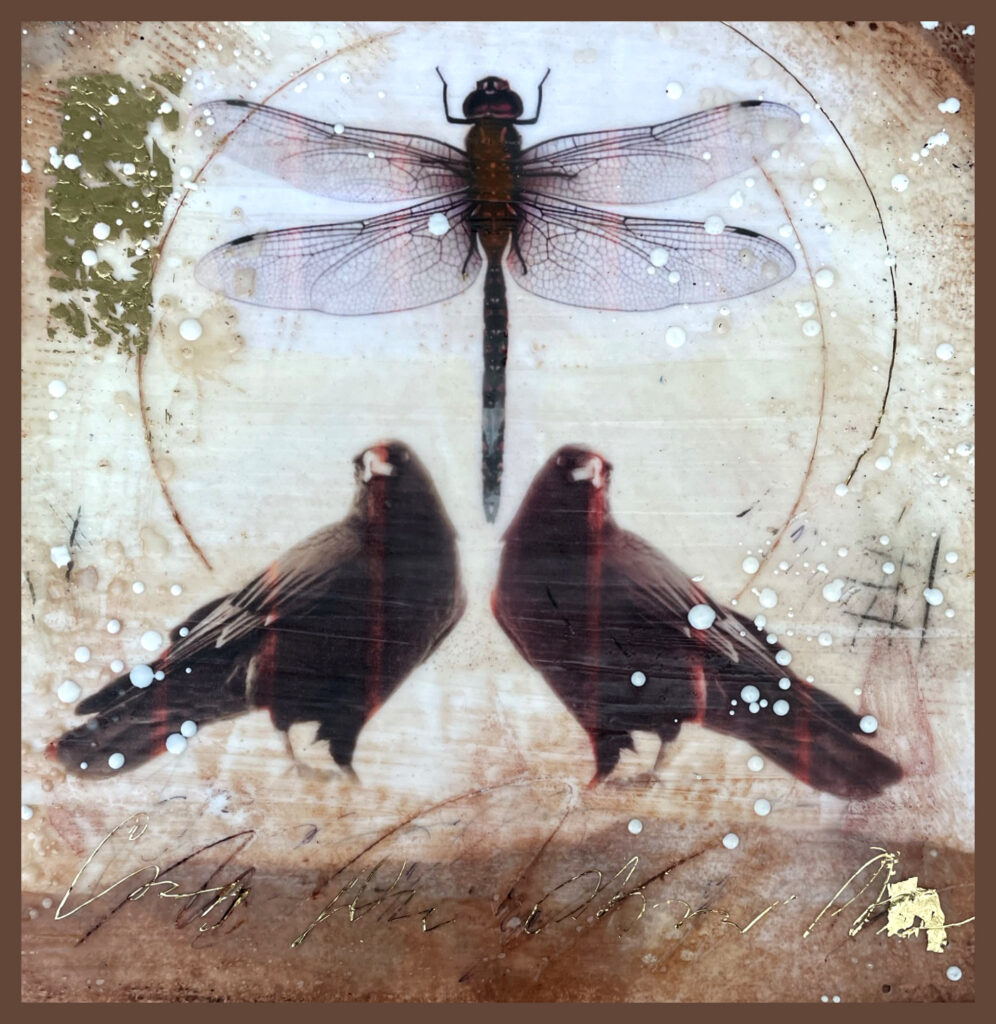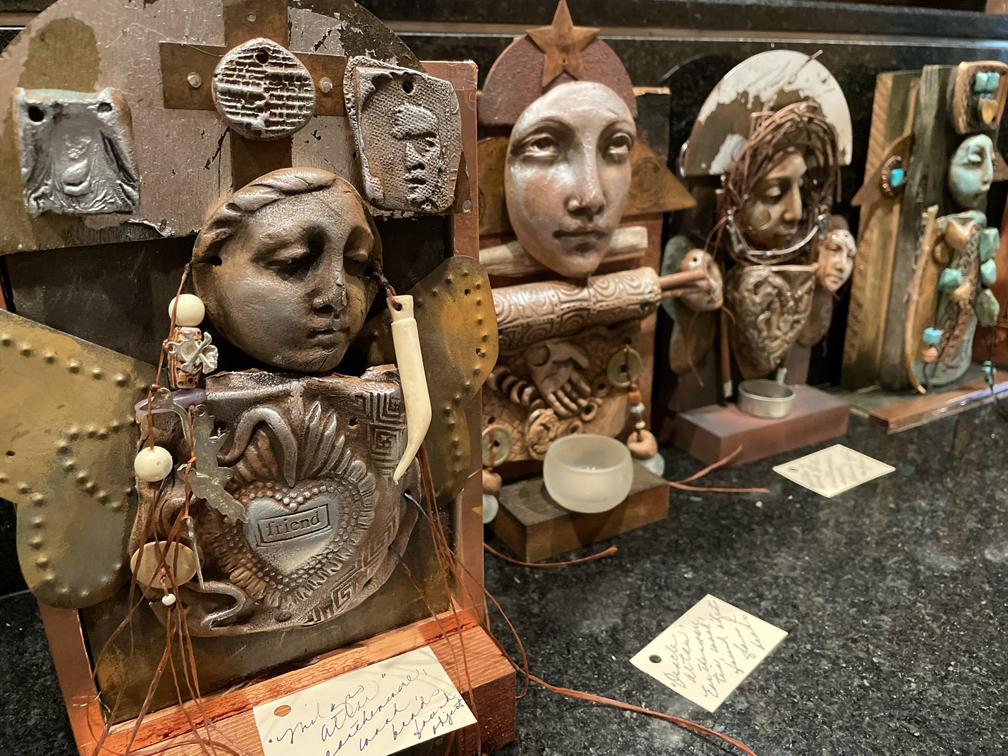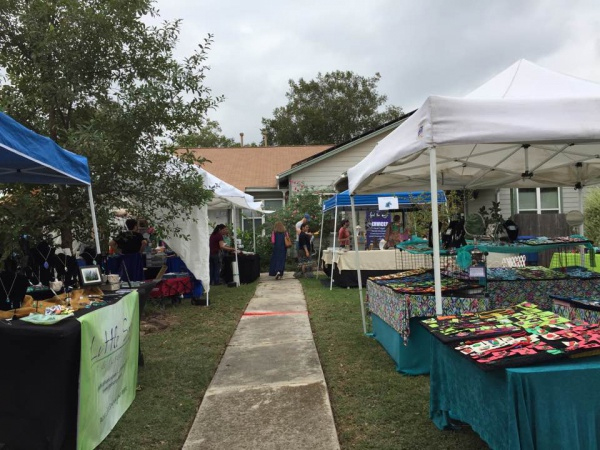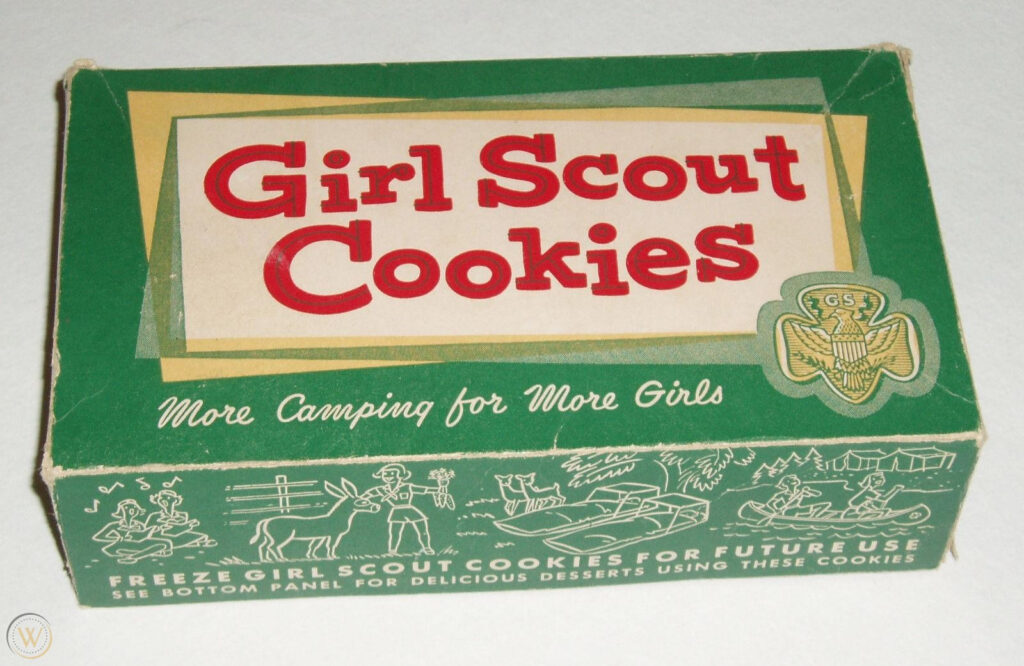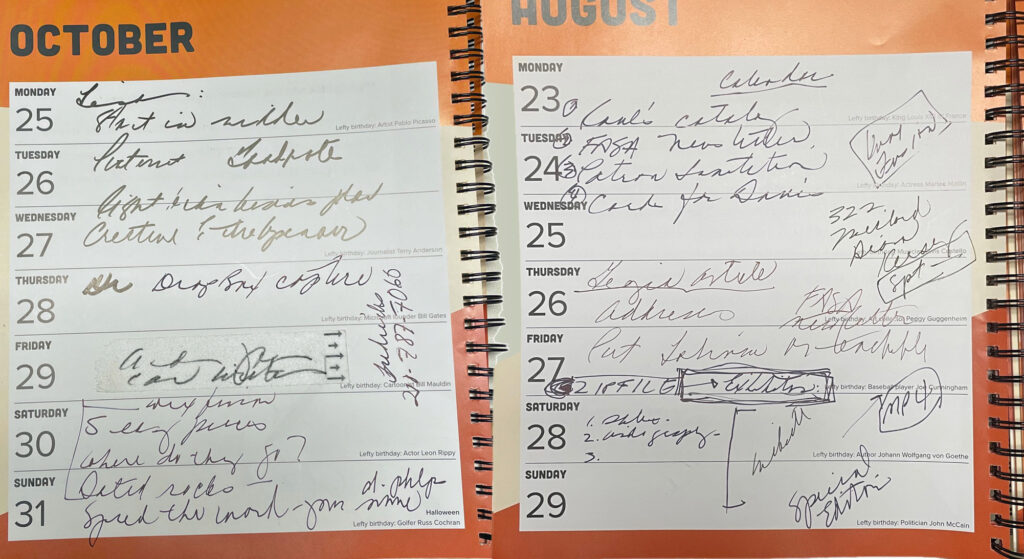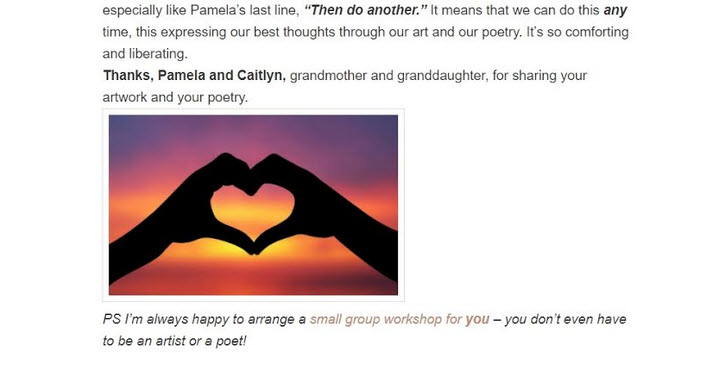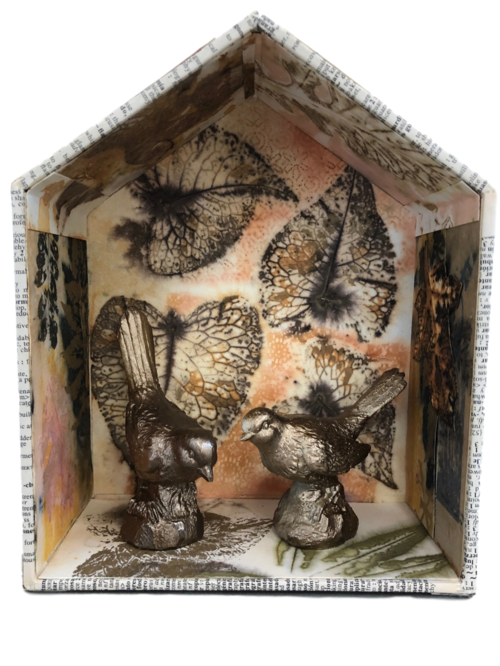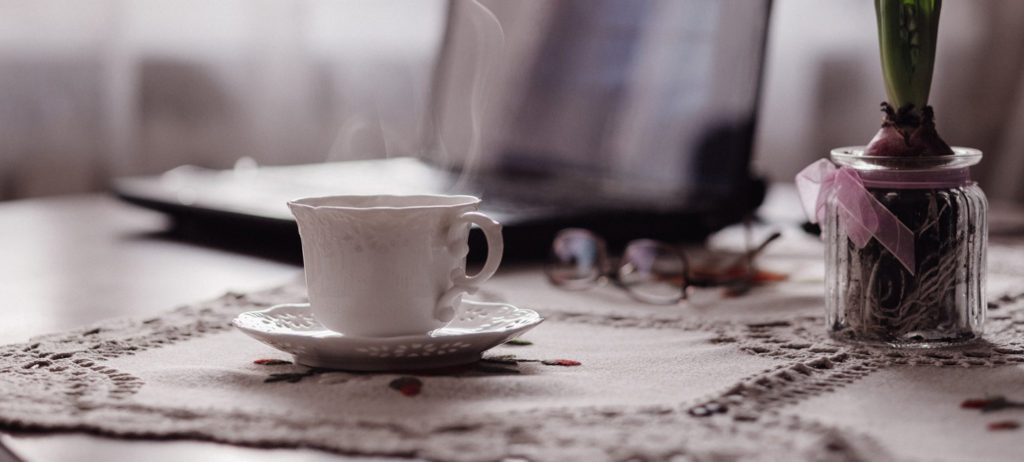
Jennifer Dixon, Vessel Workshop
I spent this past weekend in the Art Studio at UTSA/Southwest teaching a workshop called The Ephemeral Vessel: Exploring Plaster, Fiber, and Paper. As usual, I learned as much as a taught.
We began the first day by discussing the vessel as a concept. A vessel holds deep symbolic and spiritual significance, representing both containment and potential. The outside of a vessel symbolizes the physical form, protection, and boundaries, encapsulating the external aspects of life and the tangible world. It is the visible, crafted exterior that interacts with the environment, often reflecting cultural artistry and craftsmanship.

Jalen uses a soldering iron to pierce the “skin” of his vessel in progress
The inside of a vessel, however, carries profound spiritual connotations. It
represents the inner self, the soul, and the essence of being. This inner space holds potential and mystery, symbolizing the capacity to contain and nurture life, emotions, and spiritual energy. It is a metaphor for the unseen depths within every individual, the potential for growth, transformation, and the holding of sacred or significant contents.

The inside of Janis’s vessel shows little scraps and shards of memories of the process
Together, the inside and outside of a vessel illustrate the dual nature of existence: the balance between the external, material world and the internal, spiritual realm. This duality underscores the importance of harmony between our outer actions and inner values, encouraging a holistic approach to understanding life and spirituality.
And when we weren’t pondering the existentialist nature of the forms we were creating, we were also have fun! There was a moment of silence in the studio when each person got ready to pop their plaster-covered balloon. There were many oohs and ahhs when an unexpected material turned into magic on the surface of a bowl.

Almost dry enough to pop!
Taking simple materials and transforming them into meaningful creative statements has always been kind of a miraculous process. Every one of the vessels created in this workshop held a narrative. I am in awe of the vessel-makers and their stories.
Click here to see a catalog that I put together of some of the amazing work that was done this weekend.

As a final note, Everyday Sacred by Sue Bender is another one of those books that I can return too whenever I need centering. The begging bowl in this book is such a powerful image. The begging Zen monk receives the food people can spare in his bowl with gratitude. It’s an ongoing practice to accept what happens in life – and my bowl is so full of gratitude for this workshop experience!















